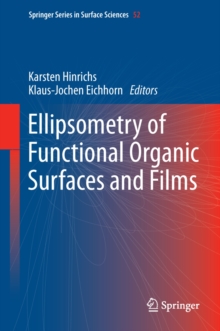
Auger- and X-Ray Photoelectron Spectroscopy in Materials Science : A User-Oriented Guide PDF
by Siegfried Hofmann
Part of the Springer Series in Surface Sciences series
Description
To anyone who is interested in surface chemical analysis of materials on the nanometer scale, this book is prepared to give appropriate information. Based on typical application examples in materials science, a concise approach to all aspects of quantitative analysis of surfaces and thin films with AES and XPS is provided. Starting from basic principles which are step by step developed into practically useful equations, extensive guidance is given to graduate students as well as to experienced researchers. Key chapters are those on quantitative surface analysis and on quantitative depth profiling, including recent developments in topics such as surface excitation parameter and backscattering correction factor. Basic relations are derived for emission and excitation angle dependencies in the analysis of bulk material and of fractional nano-layer structures, and for both smooth and rough surfaces. It is shown how to optimize the analytical strategy, signal-to-noise ratio, certainty and detection limit. Worked examples for quantification of alloys and of layer structures in practical cases (e.g. contamination, evaporation, segregation and oxidation) are used to critically review different approaches to quantification with respect to average matrix correction factors and matrix relative sensitivity factors. State-of-the-art issues in quantitative, destructive and non-destructive depth profiling are discussed with emphasis on sputter depth profiling and on angle resolved XPS and AES. Taking into account preferential sputtering and electron backscattering corrections, an introduction to the mixing-roughness-information depth (MRI) model and its extensions is presented.
Information
-
Download - Immediately Available
- Format:PDF
- Publisher:Springer Berlin Heidelberg
- Publication Date:25/10/2012
- Category:
- ISBN:9783642273810
Other Formats
- Paperback / softback from £112.49
- Hardback from £249.99
Information
-
Download - Immediately Available
- Format:PDF
- Publisher:Springer Berlin Heidelberg
- Publication Date:25/10/2012
- Category:
- ISBN:9783642273810










